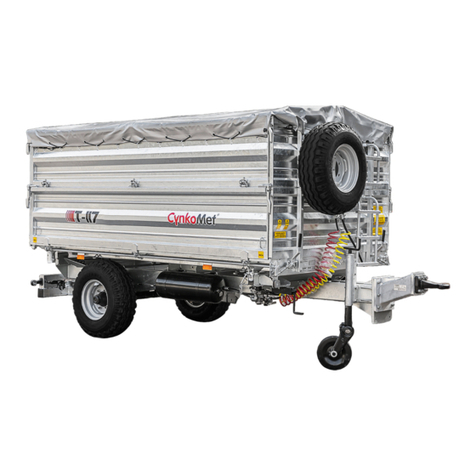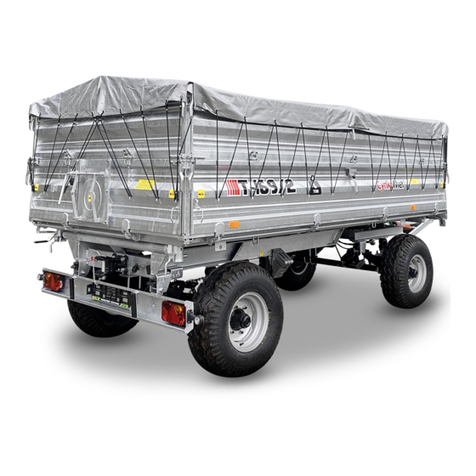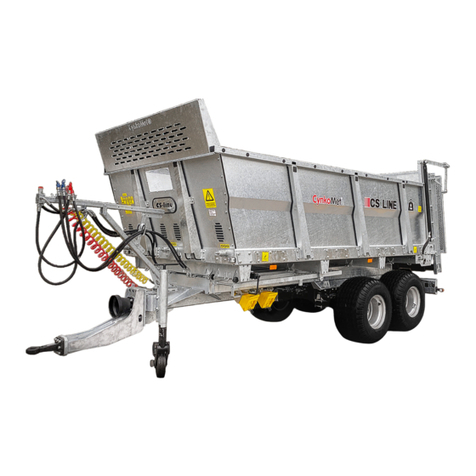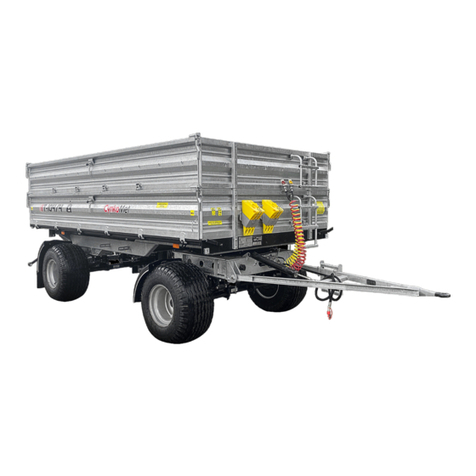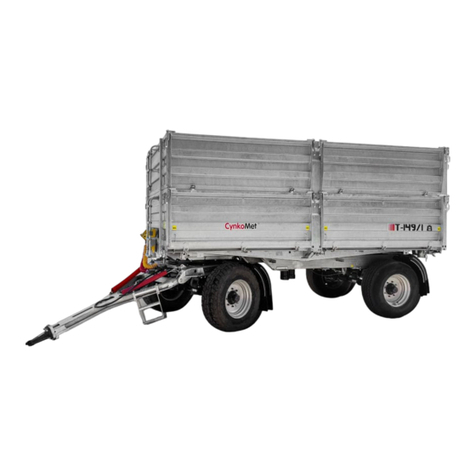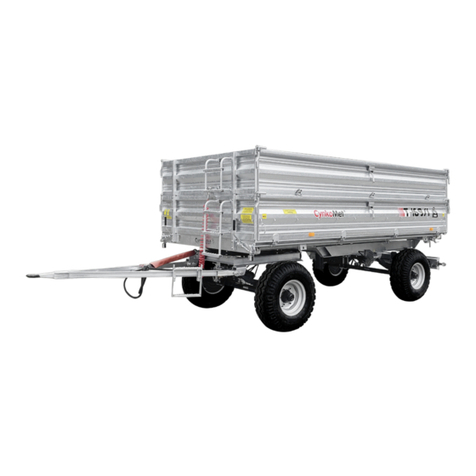TABLE OF CONTENTS
1. INTRODUCTION ........................................................................................................................................................ 5
2. PURPOSE OF THE TRAILER........................................................................................................................................ 7
3. SAFETY IN USE........................................................................................................................................................... 8
3.1 GENERAL SAFETY AND ACCIDENT PREVENTION REGULATIONS ............................................................................................ 8
3.2 Coupling and decoupling the trailer ..................................................................................................................10
3.3 TIRES................................................................................................................................................................11
3.4 PNEUMATIC AND HYDRAULIC SYSTEM..............................................................................................................11
3.5 MAINTENANCE.................................................................................................................................................12
3.6 PRINCIPLES OF MOVEMENT ON PUBLIC ROADS.................................................................................................12
3.7 DESCRIPTION OF RESIDUAL RISK. ......................................................................................................................15
3.8 RESIDUAL RISK ASSESSMENT................................................................................................................16
3.9 INFORMATION AND WARNING STICKERS...............................................................................................................16
4. INFORMATION REGARDING USE............................................................................................................................18
4.1 TECHNICAL CHARACTERISTICS...........................................................................................................................18
4.2 DESCRIPTION OF CONSTRUCTION AND OPERATION. .........................................................................................19
4.2.1. TRAILER CHASSIS..................................................................................................................................................... 19
4.2.2. LOAD BOX............................................................................................................................................................... 21
4.2.3. BRAKE SYSTEM........................................................................................................................................................ 22
4.3 RULES OF PROPER TRAILER USE. .......................................................................................................................30
4.3.1 Preparation before running for the first time. ....................................................................................................30
4.3.1.1 Control of the trailer after delivery ..................................................................................................................30
4.3.1.2 Preparation of the trailer for the first connection.............................................................................................31
4.3.2 Preparation for daily work.................................................................................................................................33
4.4 Coupling to and decoupling from the tractor....................................................................................................33
4.5 Loading and unloading of animals...................................................................................................................37
4.5.1 Preparing the trailer for loading............................................................................................................................... 37
4.5.2 Loading of livestock................................................................................................................................................. 40
4.5.3 Transport of livestock.............................................................................................................................................. 40
4.5.4 UNLOADING OF Livestock........................................................................................................................................ 42
4.6 INSTRUCTIONS OF TIRE USE.......................................................................................................................................... 43
4.7 DECOUPLING FROM TRACTOR...................................................................................................................................... 44
5. EQUIPMENT AND ACCESSORIES.............................................................................................................................45
6. TECHNICAL SUPPORT ............................................................................................................................................46
6.1 REGULATION OF DRIVING WHEEL BEARING BACKLASH. ....................................................................................46
6.2 Mounting and removal of the wheel and inspection of nut tightening. ..............................................................48
6.3 BRAKE ADJUSTMENT. .......................................................................................................................................50
6.4 MAINTENANCE OF THE PNEUMATIC SYSTEM. ...................................................................................................52
6.5 MAINTENANCE OF THE HYDRAULIC BRAKE SYSTEM. .........................................................................................53
6.6 LUBRICATION. ..................................................................................................................................................53
6.7 STORAGE AND MAINTENANCE..........................................................................................................................55
6.8 TRANSPORT......................................................................................................................................................55
7. TRAILER CASSATION..............................................................................................................................................56
8. WARRANTY...........................................................................................................................................................56
SPARE PARTS CATALOGUE .................................................................................................................................................58
1. INTRODUCTION.....................................................................................................................................................58
5HOW TO USE THE CATALOGUE. .............................................................................................................................58






